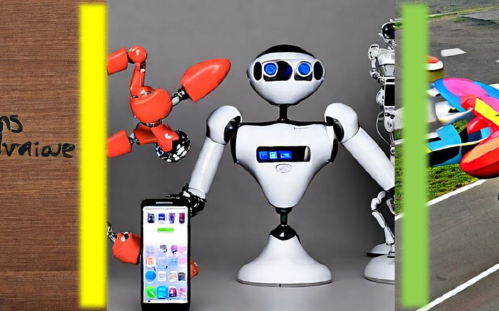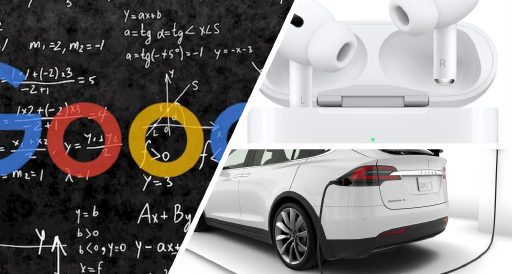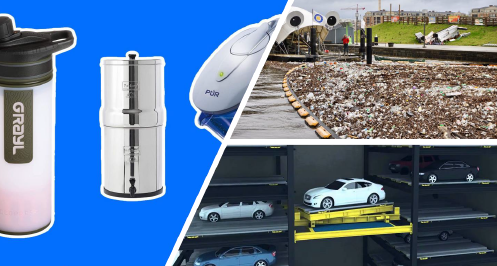Innovation for Urgency:
Understanding the Different Types of Innovations
by admin | Mar 10, 2023 |Innovation

IntroductionInnovation is a key driver of progress and success in any industry. However, not all innovations are created equal. Innovation can be classified in terms of impact or urgency. Impact-driven innovation is motivated by the desire to make more financial profits; impact is not necessarily seen as an impact for a better world. Urgency-driven innovation is driven by the need to address a problem that has pressing aspects on human quality of life; here impact is seen from the perspective of quality of life in general, including the positive impact on flora and fauna. Both types of innovation are essential for different industries and situations. Some innovations focus on addressing progress and superior performance, while others are designed to stop or control negative effects. Additionally, some innovations go beyond control and aim to eliminate problems altogether. In this post, we will explore the different types of innovations and their impact on industries.
Classification based on urgency for quality of lifeClassification based on urgency for quality of life
One type of innovation is the “vitamin” type. This innovation focuses on addressing progress and superior performance. It involves creating products or services that improve an existing process or provide a better experience for the user. This type of innovation is essential for industries that want to stay competitive and continue to grow. Examples of vitamin-type innovations include smartphones, high-performance vehicles, and advanced medical equipment.Some more examples in this category are:
• The introduction of smartphones with new features, such as higher resolution cameras and more powerful processors, improves the performance of previous models.
• The introduction of smartphones with new features, such as higher resolution cameras and more powerful processors, improves the performance of previous models.
• The development of new materials, such as graphene, that offer improved mechanical and electrical properties compared to traditional materials.
• The creation of more efficient solar cells that generate more electricity per unit area.
• Apple’s Air Pods Pro with noise-canceling technology enhances the user experience.
• Tesla’s electric cars offer superior performance compared to traditional combustion engine cars (YES! It is only a vitamin-type innovation. Why? Please, have a look here)
• Google’s search algorithm updates improve the accuracy and relevance of search results.

Another type of innovation is the “analgesic” type. This innovation focuses on stopping or keeping some negative effects under control. It involves creating products or services that address a problem or limitation of an existing product. This type of innovation is crucial for industries that want to prevent negative effects from impacting their business. Examples of analgesic-type innovations include cybersecurity software, pollution control systems, and safety equipment.
Examples in this category are also the followings:
• The development of vaccines and treatments for diseases, such as the COVID-19 vaccines, that help to mitigate the negative effects of the illness.
• The introduction of filters in cigarettes to reduce the amount of harmful chemicals that are released when smoking.
• The use of pollution control devices in factories to reduce the amount of harmful emissions released into the environment.
• Robots that collect waste from lakes and rivers to reduce the amount of harmful effects on environment.
• Robots that collect waste from lakes and rivers to reduce the amount of harmful effects on environment.
• Lifting car-parking that can park 20 cars on the surface covered by 3 cars.
• Water filters that remove harmful contaminants from drinking water, keeping people healthy and safe.
• Noise-cancelling headphones that reduce stress and fatigue caused by loud noises.
• Apps that limit screen time to help prevent digital addiction and associated negative effects.

The “antibiotic” type of innovation takes things to the next level. This type of innovation aims to eliminate problems or negative effects altogether. It involves creating products or services that fundamentally change the way things are done, often creating entirely new industries. This type of innovation is essential for industries that want to stay ahead of the curve and address major problems in a game-changing way. Examples of antibiotic-type innovations include renewable energy sources, autonomous vehicles, and artificial intelligence.The “antibiotic” type of innovation takes things to the next level. This type of innovation aims to eliminate problems or negative effects altogether. It involves creating products or services that fundamentally change the way things are done, often creating entirely new industries. This type of innovation is essential for industries that want to stay ahead of the curve and address major problems in a game-changing way. Examples of antibiotic-type innovations include renewable energy sources, autonomous vehicles, and artificial intelligence.Examples we can add here are also:
• The development of antibiotics to treat bacterial infections, which have helped to reduce mortality rates from infectious diseases.
• The introduction of water treatment technologies, such as chlorination and filtration, that have helped to eliminate waterborne diseases in developed countries.
• The creation of renewable energy sources, such as wind and solar power, that help to eliminate reliance on fossil fuels and reduce carbon emissions.
• Recycling technology that can convert waste materials into usable products is an “antibiotic” type innovation in the waste management industry. It aims to eliminate the negative effects of waste, including environmental pollution and resource depletion.
• Tesla Powerwall – addresses the elimination of energy problems by providing an efficient and sustainable energy storage solution for households and businesses.
• Zero Waste manufacturing – addresses the elimination of waste problems by designing manufacturing processes that eliminate waste, increase efficiency, and reduce environmental impact.
• Automated Inventory Management Systems – addresses the elimination of inventory problems by using sensors, machine learning, and analytics to optimize inventory levels, reduce waste, and improve supply chain efficiency.
• Carbon Capture Technology – addresses the elimination of carbon emissions by capturing and storing carbon dioxide emissions from industrial processes before they are released into the atmosphere.

All three categories of innovations have the potential to be of interest to investors, depending on the specific context and industry.All three categories of innovations have the potential to be of interest to investors, depending on the specific context and industry.
Vitamin-type innovations, which focus on progress and superior performance, may be particularly appealing to investors looking for growth opportunities and high returns on investment.
Analgesic-type innovations, which address negative effects or problems that already exist, may also be attractive to investors if they offer cost savings or other benefits to customers.
Antibiotic-type innovations, which aim to eliminate problems or negative effects, may be less immediately attractive to investors because they often require significant investment and may take longer to generate returns. However, these types of innovations may be more valuable in the long term as they can create new markets or disrupt existing ones and may also have more significant social and environmental impacts.
Conclusions
Understanding the different types of innovations and their potential impact can help individuals and organizations prioritize their efforts and investments. While all types of innovations have value, it is important to recognize that analgesic and antibiotic innovations have a significant impact on society and can offer attractive investment opportunities. These types of innovations may not receive the same level of attention as vitamin-type innovations because of much higher research and development risks, but they can provide more stable and predictable returns on investment over the long term. Usually in hackathons we see vitamin-type innovations, which are not necessarily the stringent ones for humankind. We must address this issue and find new models to support ideation and development around analgesic and antibiotic-types of innovations. It is worth considering how these different types of innovations are addressed in different industries and sectors. Furthermore, it is important to consider the potential trade-offs and unintended consequences of each type of innovation. For example, an impact-driven innovation may generate significant financial returns, but it may also have negative societal or environmental impacts. Similarly, an analgesic-type innovation or even an antibiotic-type innovation may solve a particular problem, but it may also create new problems or unintended consequences. So, we have to analyze any type of innovation in a holistic way and from multiple angles, over their life-cycles, over the supply and value chains, etc.Innovation is a complex and multifaceted process, and there is no one-size-fits-all approach to addressing the challenges and opportunities that it presents. By understanding the different types of innovations and their potential impact, individuals and organizations can make more informed decisions about where to focus their efforts and investments, and how to balance short-term and long-term goals.
—————
Credits: Stelian Brad
